TRILOGY BLOG
Physical Effects of Mycotoxins on Farmed Animals
SHARE

TRILOGY BLOG
The Trilogy blog is a source for analytical articles, news and important analytical updates. Stay current on trending mycotoxins topics and risk mitigation strategies.
Each type of mycotoxin has different effects on specific species of animals, each bringing its own financial and economic impact to farmers and producers.
Take a walk down the dairy section or meat department of your local grocery store, and you'll see label claims of "non-GMO," "hormone-free," or "antibiotic-free." One claim that you won't see on the shelves is "mycotoxin-free." Despite mycotoxins never having been fully marketed to the general consumer as an issue of concern, they are a real risk that farmers and producers must deal with throughout the production of farmed meat and farmed animal by-products, such as milk and dairy.
Different mycotoxins have different effects on specific species of animals, each bringing their own financial and economic impact to farmers and producers.
In this post, we'll explore the physical effects that mycotoxin contamination can have on the different species of farmed animals. We'll also learn about some of the options available to help mitigate the risks associated with mycotoxin contamination of feed sources.
Physical Effects of Mycotoxins by Species
Ruminants:
This refers to cattle, sheep and goats.
Mycotoxin consumption can have a range of adverse effects on ruminants, which are animals with a specialized stomach that allows for the fermentation of feed. Mycotoxins can lead to reduced feed intake and nutrient absorption, which in turn affects growth rates and milk production. These toxins compromise the immune system, increasing susceptibility to infections and diseases. Additionally, mycotoxins can cause liver and kidney damage, reproductive issues, including infertility and poor fetal development.
- Decreased Feed Intake
- Lower Milk Production
- Decreased Feed Efficiency
- Liver Damage
- Gastroenteritis
- Intestinal Hemorrhages
- Impaired Rumen Function
- Diarrhea
- Ketosis
- Irregular Heats
- Low Conception Rates
- Ovarian Cysts
- Embryonic Loss
- Contaminated Milk
- Decreased Milk Production
- Mastitis
- Laminitis

Swine:
Mycotoxin contamination can severely impact swine, leading to reduced growth and feed efficiency due to impaired nutrient absorption and metabolism. Mycotoxins weaken the immune system, making pigs more susceptible to diseases, and can cause significant liver and kidney damage. Additionally, mycotoxins may cause reproductive issues, such as reduced fertility and developmental problems in offspring.
- Tremors
- Ataxia
- Convulsions
- Skin Lesions
- Dermatitis
- Increased Infections
- Diarrhea
- Vomiting
- Reduced Feed Intake
- Gastrointestinal Tract Irritation
- Liver Damage
- Infertility
- Smaller Litter Size
- Higher Fetal Mortality
- Breathing Difficulty
- Nasal Discharge
- Coughing

Poultry:
Mycotoxins weaken the immune system, increasing the vulnerability to diseases and leading to higher mortality rates. Additionally, mycotoxins can cause damage to organs such as the liver and kidneys and lead to reproductive issues, affecting both egg production and quality.
- Slower Growth
- Reduced Overall Size
- Decreased Feeding Efficiency
- Coughing
- Sneezing
- Breathing Difficulty
- Liver Damage
- Reduced Fertility
- Decreased Hatchings
- Increased Embryo Mortality
- Low Quality Eggs

Fish and Seafood:
Mycotoxins can severely impact farmed fish and seafood by reducing growth and feed efficiency through impaired nutrient absorption and metabolism. These toxins compromise immune function, increasing susceptibility to diseases and elevating mortality rates. Additionally, mycotoxins can cause significant liver and kidney damage, as well as reproductive problems that affect fertility and offspring development.
- Slower Growth Rate
- Reduced Overall Size
- Organ Damage
- Reduced Fertility
- Decreased Hatchery Yields

Mycotoxin Risk Mitigation Strategies
- Source High Quality Feed
- If sourcing feeds ensure the supplier adheres to strict quality control measures. This includes mycotoxin screenings of raw materials and testing of finished feeds prior to distribution.
- Ensure Proper Feed Storage
- This is a key factor to consider when managing mycotoxins. If a producer or farmer sources quality feed, free of mycotoxins, but doesn't properly store it in a dry, well-ventilatied environment where humidity and temperatures are regulated they are at risk of mold growth and the resulting mycotoxin contamination.
- Comingling or Contamination Dilution
- When there is known mycotoxin contamination of feed and other mitigation options are limited or have failed, producers can dilute or "comingle" their contaminated feed with uncontaminated feed in order to reduce the total mycotoxin concentration level per serving.
- Incorporate Mycotoxin Binders
- The use of mycotoxin binders can be a realistic tool for producers when other preventative tools have failed. Mycotoxin binders can be incorporated into feed diets when there is known or suspected mycotoxin contamination. For example, if a producer dilutes their contaminated feed with uncontaminated feed a binding agent could further benefit the animal by preventing the known mycotoxin from being adsorded in the digestive tract. This measure allows the producer to utilize the feed while still offering some level of protection to their livestock.
About Trilogy
Trilogy is a food and feed safety laboratory specializing in mycotoxins, mycotoxin binder analysis, biogenic amines and animal drug residue testing. Trilogy Analytical Laboratory opened its doors in 1999 when its founders recognized a need in the mycotoxin industry for quick result turn-around utilizing reliable reference methods provided in an analytical setting. One of the main pillars of Trilogy’s strategy is to operate using a comprehensive quality program that we can rely on to ensure performance parameters are met every single time. From this philosophy the Trilogy line of quality products was born with the mycotoxin industry in mind.
Media Contact: Lynette Hischier, l.hischier@trilogylab.com



